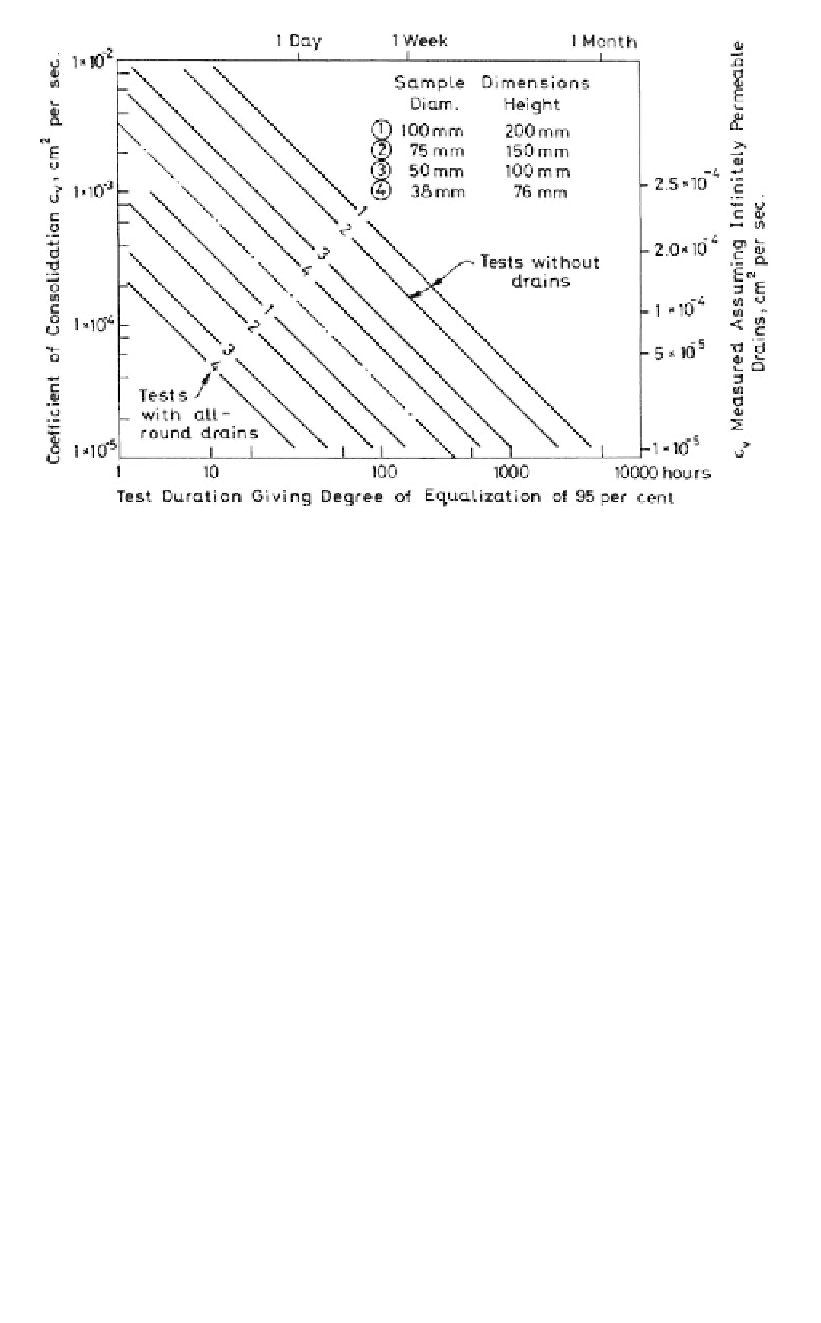Environmental Engineering Reference
In-Depth Information
Figure 6.15.
Chart for finding durations of drained and undrained tests for 95% dissipation at failure
(Blight, 1963).
due to displacement on the shear plane. Where staged testing gives high effective
cohesions, the third (and second) stage testing should be checked with tests on sam-
ples consolidated to the third stage confining pressure without earlier staged testing.
The author's recent experience is that staged testing almost always gives excessively
high c
for compacted soils, and recommend it not be used. Staged testing should not
be used for sensitive or cemented soils.
The shear strength c
of a compacted earthfill will be somewhat dependent on
the degree of compaction, with higher compaction, leading to minor increase in c
,
and
. When testing earthfill for dam construction, the laboratory tests should be
carried out on samples compacted at compaction density and moisture content con-
sistent with what will be specified for the dam construction. Where there are fabric
features present (e.g. fissures), staged testing is desirable so the complete test is car-
ried out on the one feature.
6.1.4.2
Direct shear test
Direct shear tests are used to obtain the peak and fully softened or critical state (constant
volume) strengths of granular soils (sand, silt, gravel) and cohesive soils. They are also
used to determine the residual strength of cohesive soils, by using the multiple reversal
technique which is described below, and the strength on existing surfaces of weakness
in soil, e.g. shear surfaces, slide surfaces and fissures and in the opinion of the author's
should not be.
These tests are all done in drained conditions. Those for cohesive soils are saturated
prior to testing. The test is seldom used to determine undrained strengths and in the opin-
ion of the authors should not be.
Details of testing equipment and test procedures are given in Head (1980, 1981, 1985),
ASTM D3080-98, BS1377:1990 and AS1289, 6.2.2-1998.
It is the author's experience that when direct shear and triaxial test data are available, the
peak strengths derived from direct shear tests are sometimes higher than from the triaxial

